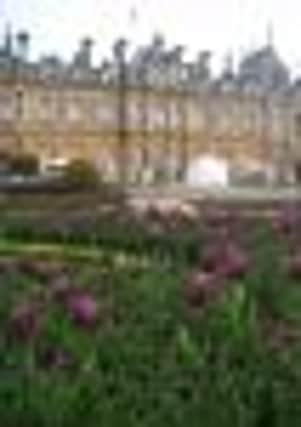Waddesdon Manor: Ferdinand’s house of treasures


On its website the property is described as an ‘astonishing’ Renaissance-style chateau – and from your first glimpse until you leave the house, you’re bombarded by the trappings of the wealth of its Rothschild owners.
I’m fascinated by the history of the the Rothschild family, who rose from a Jewish ghetto in Frankfurt to become the wealthiest dynasty in the world in the 1800s.
Advertisement
Hide AdAdvertisement
Hide AdIt all started in 1844, when Mayer Amschel Rothschild set up a finance house and went on to install each of his five sons in Europe’s five main financial centres.
Baron Ferdinand de Rothschild was born in Paris, but found it was England that felt most like home, and in 1874 acquired the land around the village of Waddesdon, hiring Gabriel-Hippolyte Destailleur to design the house, which took 15 years to build.
My favourite room in the house is the one that details the history of the estate; Rothschild ran a tight ship, and it’s fascinating to look at the accounts books detailing the minutiae of the running of the huge property and the surrounding land.
Proof perhaps that money can’t buy you happiness, his life was marked by tragedy – his son was stillborn and his wife Evelina died later the same day.
Advertisement
Hide AdAdvertisement
Hide AdHis sister, Miss Alice, would become his constant companion, and together they developed Waddesdon into a place where they entertained the fashionable world.
Alice herself officially resided nearby at the Eythrope estate, although she went to Waddesdon every night to sleep, as the damp air at her own, riverside, home exacerbated her rheumatic fever.
The wealth of the Rothschilds is in full evidence in a huge painting at Waddesdon, which charts every one of their homes, from the (by comparison) humble-looking Ascott to the majestic Mentmore Towers.
Waddesdon, bequeathed to the National Trust in 1957, has 45 rooms open to the public, stuffed full of the highest quality French furniture, decorative arts and paintings.
Advertisement
Hide AdAdvertisement
Hide AdNot wanting to fork out the £2.50 for the multimedia audio tour, I was a bit disappointed that the treasures on show weren’t labelled. I soon realised, however, that this would have rendered the house full of labels, such is the number of items on display.
The elephant automaton, made by French clockmaker Hubert Martinet, is an indication of the type of things Ferdinand liked to collect. Everything is elaborate, extravagant and flamboyant, even down to the design of the aviary, which today is home to a fascinating array of birds, including bleeding heart doves (which spot a scarily realistic-looking red stain on their breasts) and the blue-crowned laughingthrush.
There’s so much on display here that’s it almost impossible to take it all in. The paintings range from Gainsboroughs (which I felt very lucky to see in their natural setting), to works by Lucian Freud, and there are regular changing exhibitions.
Feeling a little punch-drunk, we decided it was time for tea and cake, and headed for the Stables Cafe, a short walk from the house. There was a fantastic array of cakes on display, but cream tea is my only treat of choice at a National Trust property.
Advertisement
Hide AdAdvertisement
Hide AdI also succumbed to the extremely well-stocked gift shop (great for present shopping), but was dragged away by my husband before I could splurge in the Plant Centre, which is situated in the manor’s old kitchen garden.
There’s even a wine shop, stocking a comprehensive range of vintages from Rothschild estates.
The estate also has extensive ‘Discover Waddesdon’ events programme, including tours, study sessions and dinners, which enable visitors to really get to know the place.
INFO: www.waddesdon.org.uk
ENTRY: With house, £15, without house £6.50, NT and under 5s free